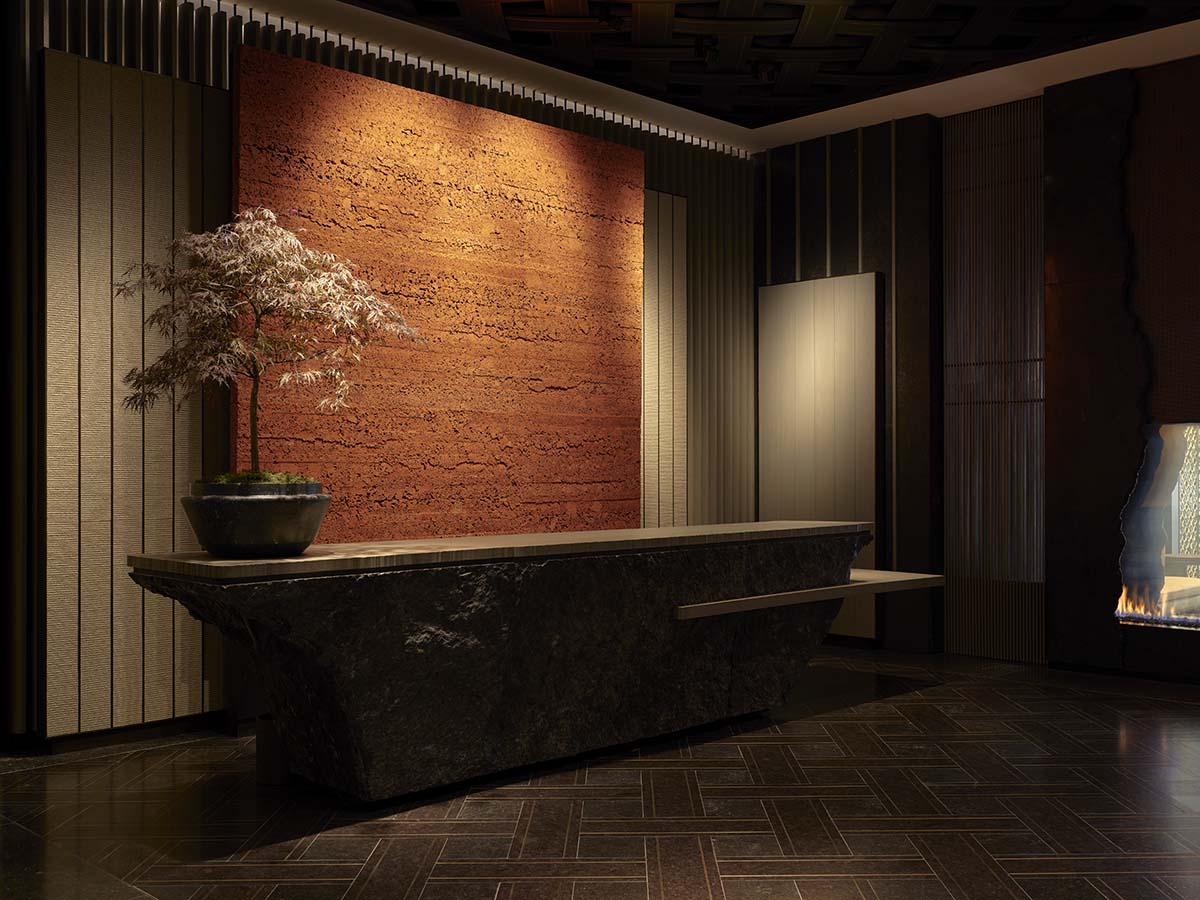DATA SHEET
Client: Aman
Interior design: Denniston Architects
Photos: courtesy of Aman
The East meets the West in the exclusive “urban sanctuary” which has opened between 57th Street and Fifth Ave., inside the Crown Building, an emblem of the American Gilded Age designed in the 1920s by Warren & Wetmore with French Renaissance details, a grand neoclassical façade and tower suggesting the architecture of castles. As the first home to the Museum of Modern Art, its unique quality is a crown-shaped pinnacle bathed in gold by lighting designer Douglas Leigh in 1983; since then it was known to all New Yorkers as the Crown Building. This historical heritage has been expertly preserved and now transformed into one of the finest New York hotels. President and CEO Vlad Doronin says, “The opening of Aman New York is a milestone moment in the evolution and growth of the Aman brand, cementing our strategy to bring the coveted Aman lifestyle to the world’s greatest urban locations.
The hotel, Aman Club and Aman Branded Residences, bring an entirely new proposition to Manhattan. Generous amenities and the unparalleled Aman service deliver a guest experience like no other, as we continue to push boundaries and set new standards in luxury hospitality.” The project is conceived as an aesthetic journey, created and conveyed working with Jean-Michel Gathy of Denniston Architects.
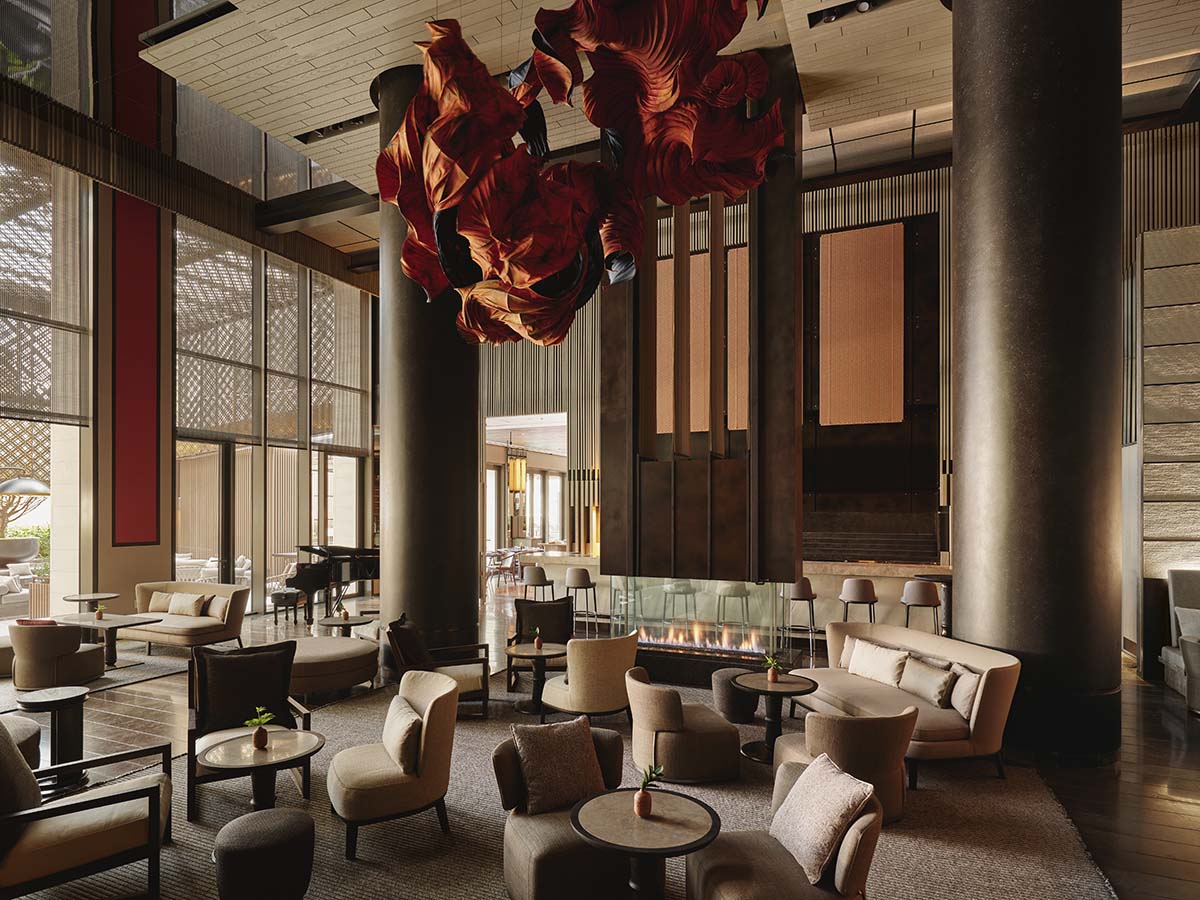

The double-height atrium has wall panels in muted tones and multilayered ceiling that suggests the brand’s Asian heritage while celebrating New York’s never-ending bustle. It features places open to the community like a Jazz Club, two gourmet restaurants – Arva with Italian cuisine and the Japanese restaurant Nama – a garden terrace with water fountains and a large brazier, symbolically connecting heaven and earth. The centerpiece is the grandiose Aman Spa spread over three floors, in addition to two spa houses, one of the most sought-after amenities for the 83 suites and the prestigious Aman Club only for members
The 22 private residences, Aman Brand Residences, are magnificent, covering the hotel’s upper floors, imbued with the elegance and lifestyle that set the brand apart. The interior design seeks a perfect balance between history and the contemporary age, Eastern and Western perceptions, and nature and artifice expressed in the concept of a sanctuary defined by materials and organic motifs tied to the natural world. From oak and walnut woods to bronze and blackened steel, the custom furnishings and the choice of components that balances the feminine yin – upholstery, carpets, and artworks – and the masculine yang of the Belgian Blue and Chocolates Brown marbles.
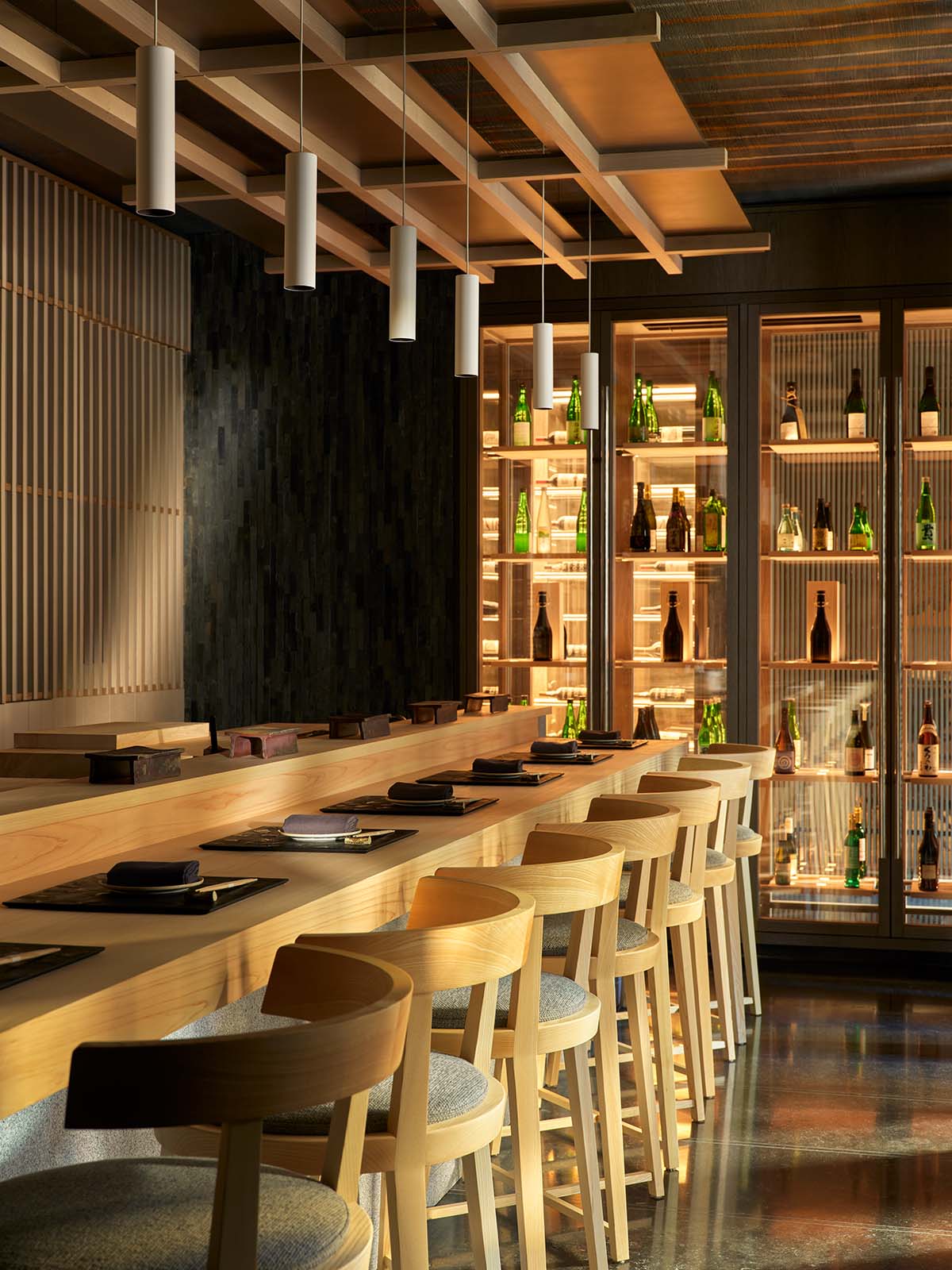
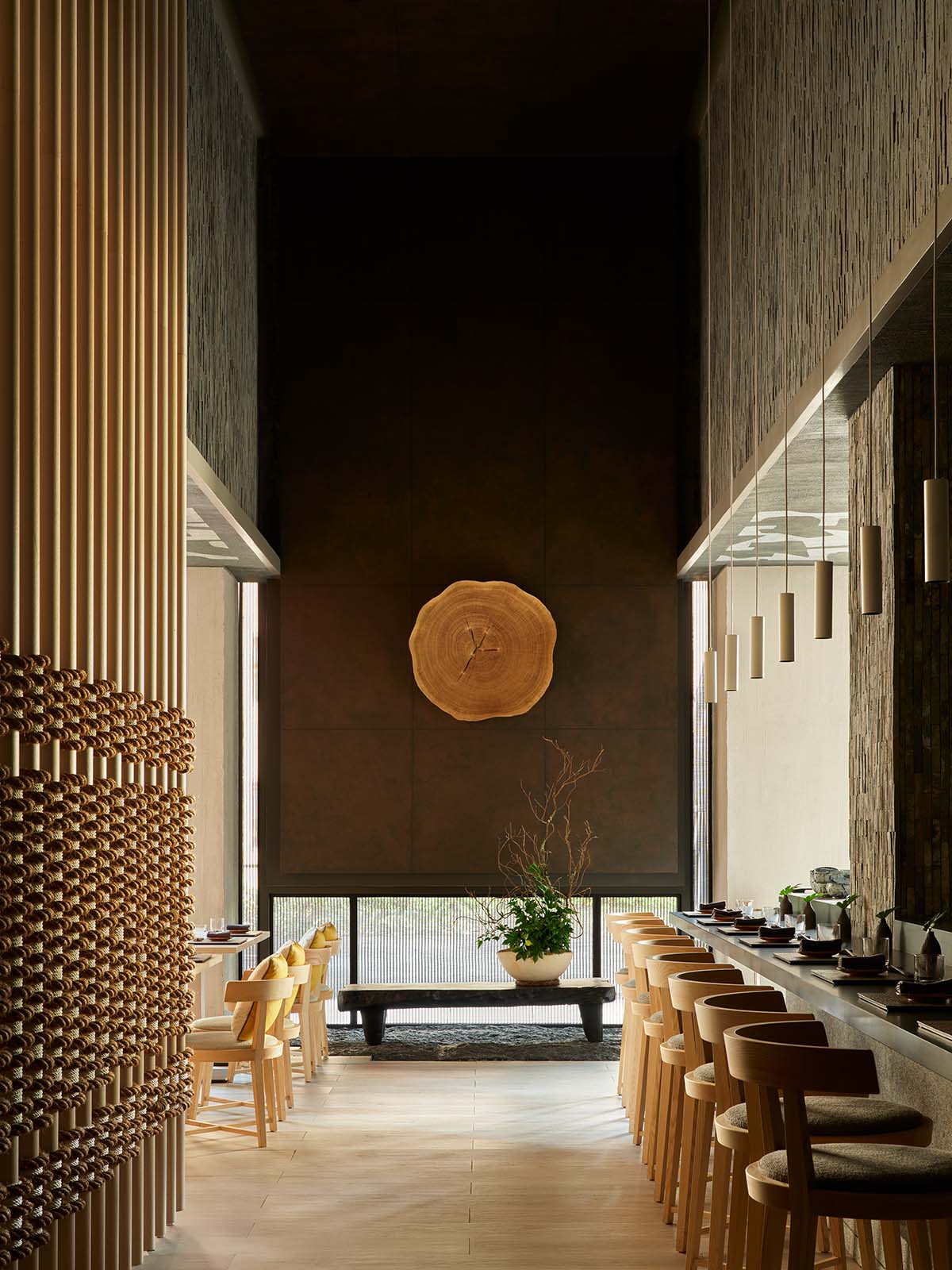
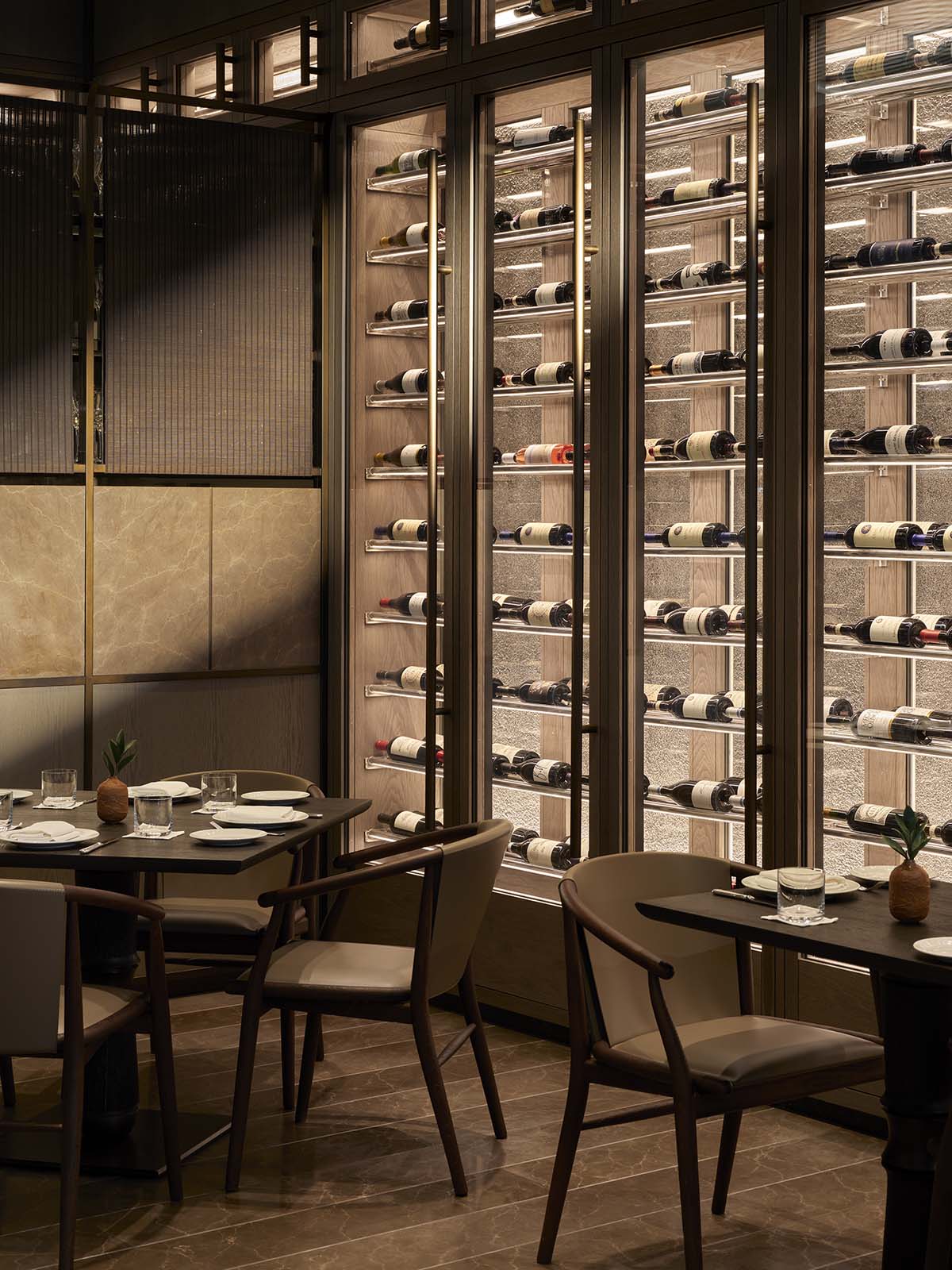
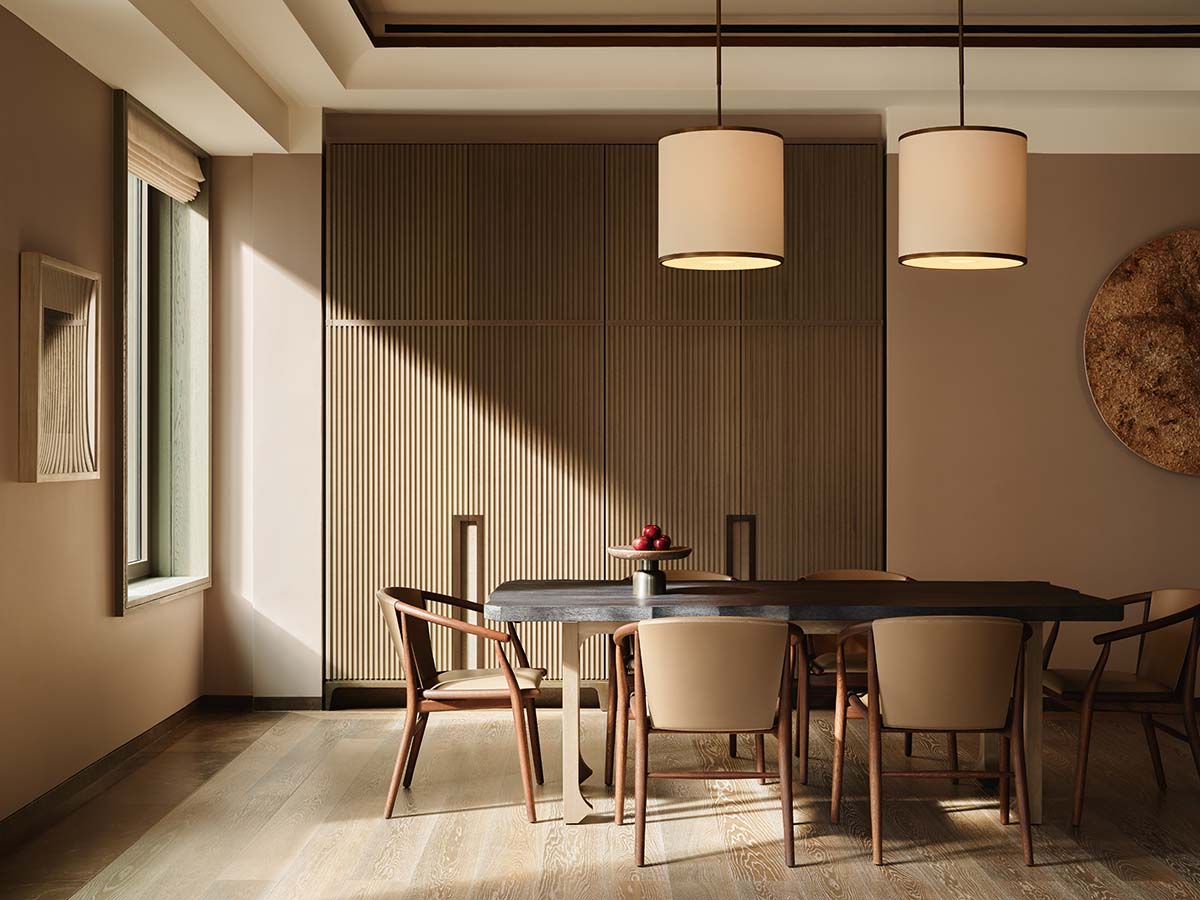
Every detail becomes part of the story: natural stone and wood form a woven pattern that suggests traditional Asian rattan baskets; an ancient inlay technique burnishes the shelves of the fireplaces; the walls are clad in natural textiles; and its floral compositions are inspired by Japanese Ikebana art. There is a common thread connecting Asia to the United States, seen in subtle golden details that continue in each interior, reminiscent of the “crown” of the iconic building.
Minimalist interiors reflecting the spare elegance of the land of the Rising Sun and the craftsmanship of Indonesia; nature that suggests Central Park; and murals evoking the 15th-century masterpiece Pine Trees (Shōrin-zu byōbu) by Hasegawa Tōhaku, one of Japan’s most famous works. This creative dimension also spreads to the suites inspired by Japanese design, featuring flexible layouts and continuity between inside and outside. They come with rotating Venetian blinds with backlit rice-paper panels to control the light (from The Flaming Beacon) to customize the interiors and the atmosphere.
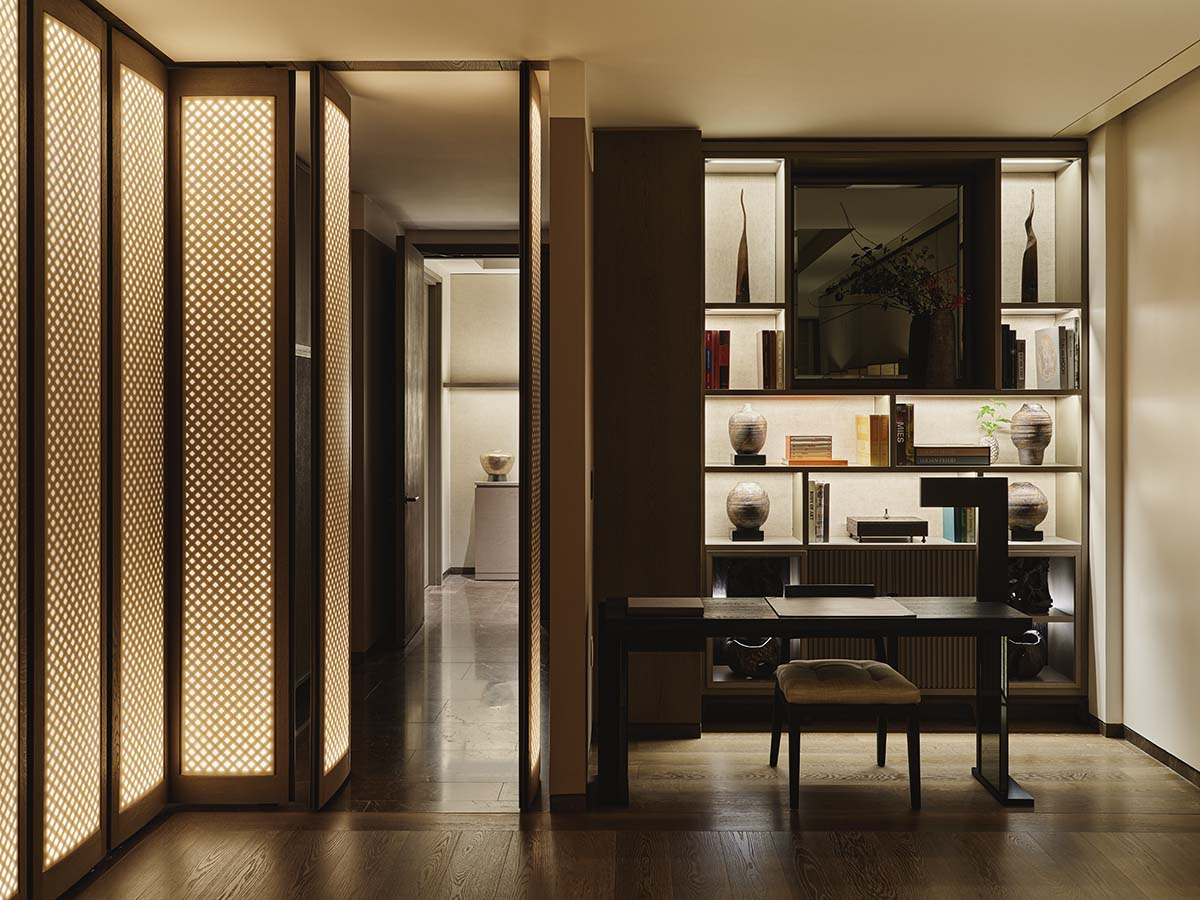
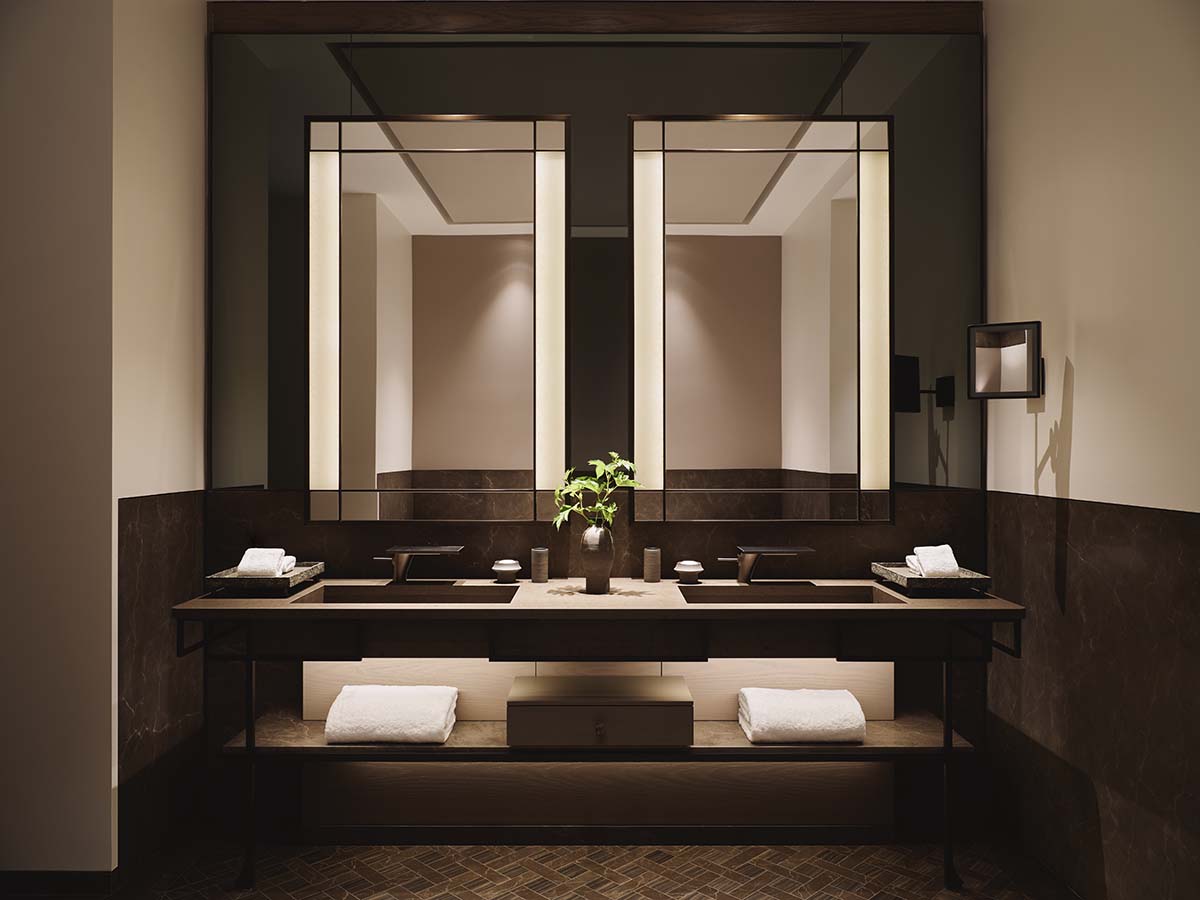
The goal is to give the city a new concept of hotel with suites and residences warmed by fireplaces, and a retractable glass roof that can turn a large terrace into a sophisticated winter garden.
Exclusively for Aman New York, celebrations of art and craftsmanship include a work by Melissa Hart for the Nama restaurant, a painting by Joseph Borde for the 14th-floor lobby painted with natural Japanese pigments, ink, turmeric, ginger, and saffron; the reception counter that was hand-shaped by the Brazilian artist Domingos Totora; and a set of lights inspired by Asian lanterns was made by Peter Gentenaar. Here, guests are steeped in a creative culture that reflects the essence of Aman and that of New York.
